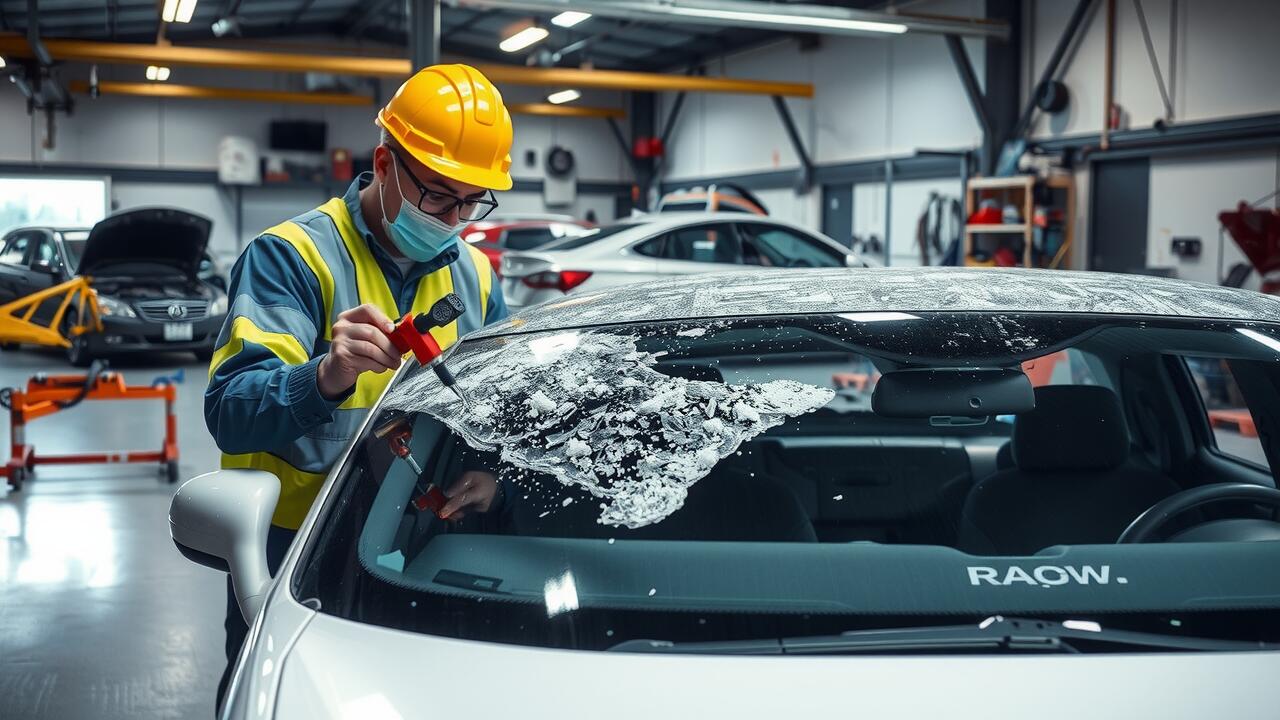
Potential Costs of Repairing Hail Damage
The costs associated with hail damage repair can vary significantly based on the extent of the damage and the type of materials involved. Minor dents or scratches on a vehicle may only require basic touch-ups, typically costing a few hundred dollars. In contrast, severe hail damage, which can involve replacing windows or entire roof sections, may escalate repair costs to several thousand dollars. Homeowners and vehicle owners should prioritize obtaining multiple estimates from reputable repair services to accurately gauge potential expenses.
Insurance coverage plays a crucial role in determining out-of-pocket costs for hail damage repair. Many policies include provisions for hail damage, often covering the majority of repair expenses after deductibles are met. It is important to review individual insurance policies closely, as they can differ significantly in terms of coverage limits and exclusions related to hail damage. Understanding these details can help individuals prepare for financial responsibilities associated with restoring their property or vehicle following a hail storm.
Factors Influencing Repair Costs
Several factors come into play when determining the costs associated with hail damage repair. The severity of the damage is a primary consideration; minor dents may require less time and fewer materials to fix than extensive damage that compromises a vehicle's structural integrity. Additionally, the type of vehicle being repaired greatly influences costs. Luxury or rare models often have higher parts and labor costs due to specialized services needed for repairs.
Location also plays a significant role in repair expenses. Urban areas may have higher labor rates compared to rural settings, reflecting the demand for skilled technicians. The choice between using original manufacturer parts or aftermarket components can further affect pricing, with OEM parts typically incurring a premium. Understanding these variables is essential for making informed decisions about hail damage repair options.
DIY Repairs vs. Professional Services
DIY repairs can be a viable option for homeowners looking to save money on hail damage repair. Basic fixes may involve straightforward tasks, such as applying touch-up paint or using a hairdryer to alleviate minor dents. For those with some experience in home repairs, tackling small areas might feel manageable. However, it’s crucial to accurately assess the extent of the hail damage before deciding to go the DIY route.
On the other hand, professional services often provide a more comprehensive solution. Trained specialists can evaluate the full scope of the damage and apply industry-standard techniques for effective hail damage repair. They possess the necessary tools and experience to handle complicated issues that may arise, ensuring that the repair work meets safety and aesthetic standards. Engaging professionals can alleviate concerns about missed damages or improper repairs, ultimately offering peace of mind.
When to Consider DIY Repair
Many homeowners may feel inclined to tackle hail damage repair on their own, especially if the damage appears minimal. Small dents on metal surfaces or minor cosmetic issues can often be managed with the right tools and techniques. DIY repair kits are available that provide guidance and necessary materials, making this option more accessible for those with basic home repair skills. Evaluating the scope of damage will help determine if a DIY approach is feasible.
However, more extensive hail damage, particularly on larger surfaces or structural components, typically requires professional intervention. The risks of improper repairs can lead to costlier fixes down the line. Homeowners should also consider their comfort level with tools and the time required for an adequate repair. Taking these factors into account will ensure that decisions regarding hail damage repair align with safety and long-term effectiveness.
Preventing Future Hail Damage
Taking proactive steps can significantly reduce the risk of hail damage to your property. Installing protective features such as hail-resistant roofing and impact-resistant windows can offer substantial defense against severe weather. Additionally, maintaining trees and shrubs around your home helps prevent falling branches that may exacerbate damage during hail storms. Regular inspections and maintenance of your home's exterior make it easier to identify and address vulnerabilities before they become serious problems.
Another effective strategy is to create a well-thought-out emergency plan. This could include understanding your area's weather patterns and being prepared to take immediate actions during hail storms. Ensuring that your home and vehicles are sheltered in garages or under sturdy structures can minimize potential hail damage. Implementing these protective measures not only safeguards your property but may also help reduce the need for extensive hail damage repair in the future.
Effective Protective Measures
Protecting your property from potential hail damage begins with a few proactive measures. Investing in high-quality roofing materials that offer increased durability can significantly reduce the risk of serious damage during a hailstorm. Additionally, installing hail-resistant windows and garage doors provides another layer of defense. Being aware of seasonal weather forecasts can help homeowners make timely adjustments, such as temporarily covering vulnerable areas with protective materials.
Another effective strategy involves optimizing landscaping around your property. Planting trees and shrubs strategically can create a natural barrier that shields structures from hail. This not only enhances the curb appeal of your home but also minimizes potential costs associated with hail damage repair. Routine maintenance of gutters and downspouts can also prevent water from pooling and causing further issues after a hail event. Taking these preventive steps can lead to long-lasting protection against the elements.
FAQS
How long do I have to file an insurance claim for hail damage?
Most insurance companies require that you file a claim within a specific period, typically between 30 to 90 days after the damage occurs. It's best to check your policy for exact details.
What happens if I don’t repair hail damage promptly?
Delaying repairs can lead to more extensive damage, such as leaks or rust, which can increase repair costs and potentially affect your insurance coverage.
Is there a recommended timeframe for fixing hail damage?
While there is no strict deadline, it's advisable to have hail damage assessed and repaired within six months to prevent further complications.
Can I repair hail damage during the winter months?
Yes, but working under cold conditions can be challenging, and some materials may not adhere properly. It's often best to wait for milder weather when possible.
How can I determine if my hail damage needs immediate attention?
If you notice leaks, significant dents, or damage to critical components of your home, it’s essential to address these issues as soon as possible to prevent further problems.

